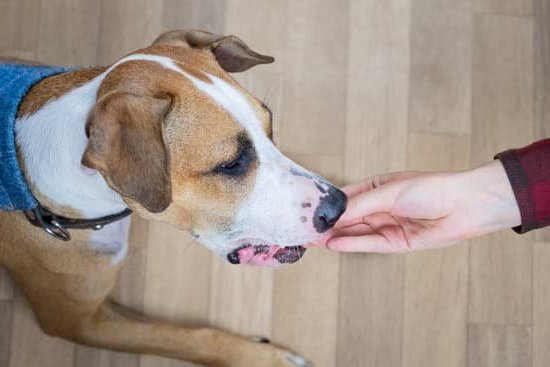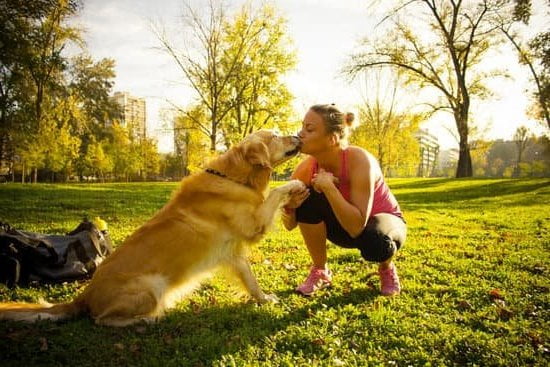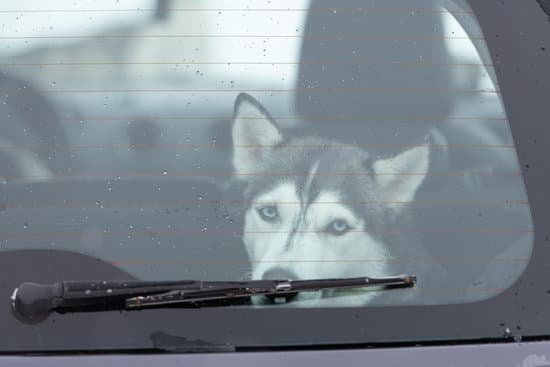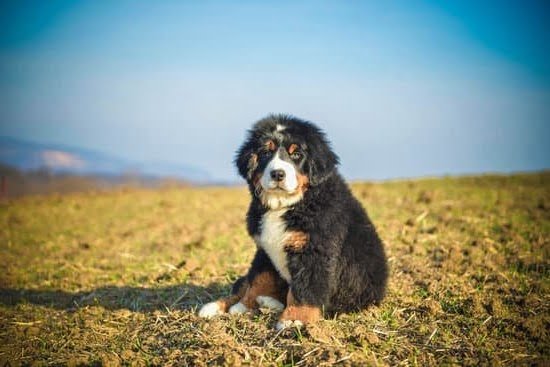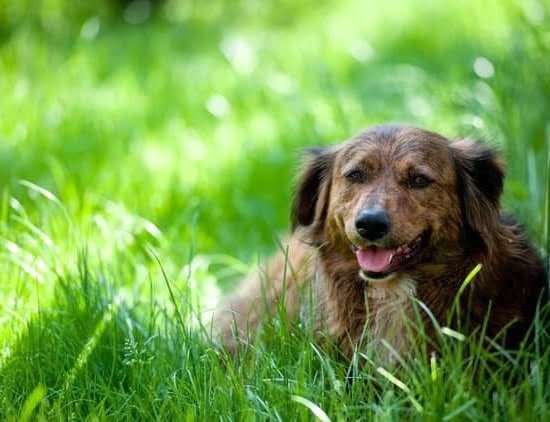Potty training can be a challenging task, and when it comes to older dogs, the challenge may seem even greater. Many dog owners wonder if it’s possible to potty train an older dog who has never been properly trained before. In this article, we will explore the process of potty training an older dog and address the unique challenges that come with it.
As dogs age, their physical abilities and bodily functions can change. This means that they may not have the same level of bladder control as they did when they were younger. Additionally, older dogs may have developed certain habits or behaviors that make potty training more difficult. However, with the right approach and consistent effort, it is indeed possible to successfully potty train an older dog.
Understanding the importance of potty training for older dogs is essential. Not only does proper potty training prevent accidents in the house, but it also promotes good hygiene and overall cleanliness for both you and your furry friend.
Moreover, a well-trained dog will experience less stress and anxiety when they are able to relieve themselves at appropriate times and in designated areas.
So let’s delve into the world of potty training for older dogs, learn how to address potential health issues, set realistic expectations, choose the right method, establish a consistent schedule, use positive reinforcement techniques effectively, deal with accidents confidently, troubleshoot common challenges that arise along the way, and ultimately celebrate your older dog’s success in mastering this crucial skill.
Understanding the Importance of Potty Training for Older Dogs
Potty training is an essential skill for dogs of all ages, including older dogs. While it may be more challenging to potty train an older dog compared to a young puppy, it is never too late to teach them proper bathroom etiquette.
One of the key reasons why potty training is important for older dogs is hygiene. Accidents can lead to unsanitary conditions in your home and potential health risks for both your pet and your family members. By properly potty training your older dog, you can ensure that they have a designated area where they can eliminate, eliminating the risk of messes around the house.
Another reason why potty training is crucial for older dogs is socialization. Many senior dogs are already trained to go outdoors or use specific areas for elimination, but some may have developed bad habits over time. It is important to establish consistent bathroom habits to maintain good manners and avoid embarrassing situations when visiting friends, family, or public places with your older dog.
To help you understand why potty training is necessary for older dogs, here are some key points:
- Hygiene: Proper potty training eliminates accidents indoors and creates a clean environment for both your pet and your household.
- Socialization: Consistent bathroom habits promote good manners in public and allow you to take your older dog on outings without worrying about accidents.
- Health: Potty training helps identify potential health issues such as urinary tract infections or digestive problems through monitoring their elimination patterns.
Now that we have established the importance of potty training for older dogs, it is crucial to address any potential health issues that may hinder the process in order to set realistic expectations for success.
Assessing and Addressing Potential Health Issues
Assessing and addressing potential health issues is an important step in potty training an older dog. Older dogs may have age-related health conditions that can affect their ability to hold their bladder or recognize the need to go outside. It is essential to first consult with a veterinarian to rule out any underlying medical issues that may be causing accidents or hindering the potty training process.
Veterinary check-up
Scheduling a veterinary check-up is crucial when potty training an older dog. The vet will conduct a thorough examination, including tests for urinary tract infections, bladder stones, or other health conditions that could contribute to accidents. They can also provide insights into your dog’s specific needs and recommend any necessary treatments or medications.
Age-related changes
As dogs age, they may experience physiological changes that make it challenging to control their bladder. Weakness in the muscles supporting the bladder, cognitive decline, or certain medications can all be factors in accidents and difficulty with potty training. Understanding these age-related changes will help you approach training with empathy and patience while considering appropriate modification techniques.
Medications and side effects
Some medications taken by older dogs may increase urine production or affect bladder control, leading to accidents indoors. If your dog is on medication, it is important to discuss this with your veterinarian as adjustments may be needed to facilitate successful potty training.
Addressing potential health issues not only helps in the potty training process but also ensures your older dog’s overall well-being. By taking the time to identify and manage any underlying medical conditions, you can set your pet up for success as you work together towards achieving potty training goals. Remember, patience and understanding are key during this process as your dog adjusts to any necessary treatment plans or modifications required due to their health condition.
Setting Realistic Expectations
When potty training an older dog, it is important to set realistic expectations. Unlike puppies, older dogs may have ingrained habits and behaviors that can make the potty training process more challenging. There are several factors to consider when setting expectations for potty training an older dog.
Firstly, it is essential to understand that each dog is different and will progress at their own pace. Factors such as breed, age, previous living conditions, and individual personality can all play a role in how quickly a dog will learn to be potty trained. It is important to be patient and understanding during this process.
Another factor to consider is any previous experiences or trauma that the dog may have had. Older rescue dogs or dogs who have been through multiple homes may require extra time and patience in order to overcome any anxieties or fears associated with potty training. It is crucial to create a calm and positive environment for these dogs so they feel safe and confident in learning the proper elimination habits.
Furthermore, health issues can also contribute to accidents or difficulty in potty training older dogs. Conditions such as urinary tract infections, diabetes, or mobility issues can affect a dog’s ability to control their bladder or bowels. It is important to assess your dog’s overall health and consult with a veterinarian if you suspect any underlying health problems that may be impacting their potty training progress.
It is also worth noting that consistent reinforcement and positive reward-based techniques are key in setting realistic expectations for potty training an older dog. Dogs of all ages respond well to positive reinforcement, which can include treats, praise, or petting as rewards for desired behavior. Consistency and patience are crucial when using these techniques as it may take some time for an older dog to understand what is expected of them.
Choosing the Right Potty Training Method for an Older Dog
The Importance of Tailoring the Method to Your Dog
When it comes to potty training an older dog, it is crucial to choose the right method that suits your dog’s individual needs and temperament. Every dog is different, and what works for one may not work for another. Take into consideration factors such as your dog’s age, breed, previous potty training experiences, and any medical or behavioral issues they may have. The right approach will ensure a more successful and efficient potty training process.
Crate Training
One popular method for potty training dogs of all ages is crate training. This method involves using a crate or a small confined space where your dog can rest comfortably when you are unable to supervise them. Crate training can be especially effective for older dogs because it appeals to their natural instincts to keep their living area clean.
Make sure the crate is large enough for your dog to stand up, turn around, and lie down in a comfortable position. Gradually increase the amount of time they spend in the crate, always ensuring they have frequent breaks to eliminate.
Paper Training or Litter Box Training
If you live in an apartment or have limited outdoor space, paper training or litter box training might be a suitable option for your older dog. This method involves teaching your dog to eliminate on a specific area covered with newspaper or puppy pads indoors or in a designated litter box with kitty litter. It is important to gradually transition from indoor elimination to outdoor elimination once your dog has developed this habit.
Outdoor Training
For those who have easy access to outdoor areas, outdoor potty training can be an ideal choice for older dogs. This method focuses on teaching your dog to eliminate outside in specific spots through positive reinforcement and consistency. Choose a designated area where you want them to go each time they need to relieve themselves and be sure to praise and reward them when they successfully use that spot.
By considering your dog’s needs and lifestyle, you can choose the potty training method that is most suitable for your older dog. Remember, consistency, patience, and positive reinforcement are key elements regardless of the method you choose. With the right approach, you can help your older dog successfully learn proper bathroom habits.
Establishing a Consistent Schedule for Potty Breaks
When potty training an older dog, one of the key aspects to focus on is establishing a consistent schedule for potty breaks. This regular routine helps your dog understand when and where they are expected to relieve themselves, making the training process more efficient and effective. Here are some tips for creating a consistent schedule:
- Determine the ideal frequency: The first step in setting up a potty break schedule is determining how often your older dog needs to go outside. This can vary depending on factors such as the dog’s age, size, and overall health. On average, adult dogs can hold their bladder for about 4-6 hours, but it is best to consult with your veterinarian to determine the specific needs of your furry friend.
- Designate specific times: Once you have determined the frequency of potty breaks, designate specific times throughout the day when you will take your dog outside. It is important to note that puppies may require more frequent trips outside compared to adult dogs. Aim for taking your older dog out at least three to four times per day initially.
- Be consistent with timing: Dogs thrive on routine and consistency. Try to stick to a set schedule by taking them out at the same time every day. This helps teach them when they can expect a potty break and reduces accidents inside the house.
To further ensure success in establishing a consistent schedule for potty breaks, it can also be helpful to keep track of your dog’s bathroom habits in a journal or on a smartphone app. By monitoring their patterns over time, you can fine-tune their schedule accordingly.
Remember that accidents may happen during the initial stages of training an older dog; however, do not scold or punish them if this occurs. Instead, calmly clean up the mess without drawing attention to it and continue following their established schedule.
By creating a consistent schedule for potty breaks, you are setting your older dog up for success in their potty training journey. With time and patience, they will learn to adapt to the routine and understand where they should go when nature calls.
Positive Reinforcement
Potty training an older dog can be a challenging process, but using positive reinforcement techniques can be highly effective in encouraging desired behavior. Positive reinforcement involves rewarding your dog for exhibiting the correct potty behavior, which helps to reinforce and strengthen the desired action. Here are some effective techniques to consider when potty training an older dog:
- Treat Rewards: One of the most common forms of positive reinforcement is using treats as rewards. When your older dog successfully goes potty outside or in their designated area, immediately praise them and offer a small, tasty treat. This will create positive associations with the desired behavior and motivate them to repeat it.
- Verbal Praise: Dogs thrive on verbal cues and praise from their owners. When your older dog successfully eliminates in the appropriate spot, use a cheerful voice and say phrases like “good job” or “well done.” Your enthusiasm will show them that they have done something right, making them more likely to continue this behavior.
- Physical Affection: Many dogs respond well to physical touch as a form of reward. After your older dog has successfully gone potty where they should, give them a gentle pat or scratch behind the ears. This can help create a positive connection between going potty correctly and receiving affection from you.
- Playtime Rewards: In addition to treats, verbal praise, and physical affection, incorporating playtime as a reward can also be effective. After your older dog eliminates properly, engage in a short play session with their favorite toy or engage in an activity they enjoy. This not only reinforces the desired behavior but also strengthens the bond between you and your furry friend.
Remember that consistency is key when utilizing positive reinforcement techniques for potty training an older dog. Be patient with your pet and celebrate their success every time they exhibit the desired behavior. With persistence and dedication, you can effectively potty train your older dog and enjoy cleaner living spaces together.
Dealing with Accidents
Dealing with accidents can be one of the biggest challenges when potty training an older dog. It’s important to react calmly and effectively in order to correct their behavior and prevent future accidents. Here are some tips on how to react and correct behavior when accidents occur.
Stay Calm
When you discover that your dog has had an accident, it’s crucial to stay calm. Yelling or punishing your dog will only confuse them and may even make the situation worse. Instead, take a deep breath and remind yourself that accidents happen during the potty training process.
Act Immediately
Once you’ve composed yourself, it’s important to act immediately to clean up the mess. Dogs have a strong sense of smell, so thoroughly cleaning the area will help eliminate any lingering odors that may encourage your dog to repeat their behavior in that spot.
Use an Enzymatic Cleaner
Standard household cleaners may not completely remove the odor of urine or feces from your floors or furniture, which can lead your dog to think it’s an acceptable place to go again. Instead, use an enzymatic cleaner specifically designed for pet accidents. These cleaners break down the organic compounds in urine and feces, eliminating both the odor and any underlying stains.
No Punishment
As mentioned earlier, punishing or scolding your older dog for having an accident won’t be effective in correcting their behavior. Dogs do not understand punishment after-the-fact, so it will only confuse them and damage the trust between you and your furry friend.
Redirect Their Attention
Instead of focusing on reprimanding your dog for their accident, redirect their attention towards appropriate elimination areas such as a designated potty spot outside or a litter box indoors (if applicable). Take them immediately to the desired location after cleaning up the accident, and praise them enthusiastically if they eliminate in the right spot. This positive reinforcement will help them associate the correct behavior with rewards.
Reinforce Potty Training Basics
Even if your older dog has accidents, it’s important to continue reinforcing basic potty training principles. Take them outside frequently, especially after meals or naps, and reward them when they go in the appropriate place. Consistency is key in teaching your dog where it’s acceptable to eliminate.
By reacting calmly, promptly cleaning up accidents, and redirecting your dog’s attention to appropriate elimination areas, you can effectively address accidents and help your older dog understand where they should be going potty. Remember that potty training can take time and patience, so stay persistent and positive throughout the process. With consistent effort and reinforcement, your dog will eventually develop good bathroom habits.
Troubleshooting Common Challenges in Potty Training an Older Dog
Potty training an older dog can sometimes be accompanied by various challenges. Understanding and troubleshooting these challenges is essential for successful potty training. One common challenge is when the dog refuses to go potty outside.
This can be due to a variety of reasons such as fear or anxiety, lack of familiarity with going potty outdoors, or previous negative experiences. If your older dog is not comfortable going potty outside, it’s important to be patient and create a positive association with outdoor bathroom breaks.
Another challenge that may arise during the potty training process is accidents inside the house. This can be frustrating and discouraging, but it’s crucial not to punish your dog for accidents. Punishment can lead to fear and confusion, making the potty training process even more difficult. Instead, focus on reinforcing positive behaviors and redirecting your dog’s attention when accidents occur.
Sometimes older dogs may have specific health issues that affect their ability to hold their bladder or control their bowel movements. Health conditions such as urinary tract infections, kidney problems, or mobility issues can contribute to accidents in the house. If you suspect that your dog’s accidents are due to underlying health issues, it’s important to consult with a veterinarian for proper diagnosis and treatment.
In addition to health concerns, certain behavioral issues may also pose challenges in potty training an older dog. Separation anxiety or fear of being outside alone can make it difficult for dogs to use the bathroom outdoors consistently. In these cases, professional assistance from a dog trainer or behaviorist may be necessary to address the root cause of the problem and develop effective strategies for overcoming it.
Every dog is different, so troubleshooting common challenges in potty training requires patience and adaptability. It’s important to remain consistent with your training methods while adjusting them as needed based on your dog’s unique needs and responses. By addressing these challenges patiently and persistently, you can help your older dog successfully overcome obstacles and become fully potty trained.
Patience and Persistence
Potty training an older dog requires patience and persistence. It may take some time for them to adjust to a new routine and learn where and when it is appropriate to eliminate. Here are some tips to help you successfully potty train your older dog:
- Create a designated potty area: Choose a specific spot in your yard where you want your dog to go potty. Take them to this spot consistently, using a leash if necessary, so they understand that this is their designated bathroom area.
- Use positive reinforcement: When your dog eliminates in the appropriate spot, praise them and give them a treat as a reward. Positive reinforcement will help reinforce the behavior you want from them.
- Establish a consistent schedule: Dogs thrive on routine, so establishing a regular schedule for potty breaks is crucial. Take your dog out first thing in the morning, after meals, before bedtime, and at other scheduled times throughout the day.
- Watch for signs of needing to go: Pay close attention to your dog’s behavior before they have an accident indoors. Signs such as restlessness, sniffing around, or circling can indicate that they need to go outside.
- Clean up accidents properly: If your older dog has an accident inside the house, it’s important to clean it up properly using an enzymatic cleaner specifically designed for removing pet urine odors. This will help prevent them from being attracted back to the same spot.
- Be patient and avoid punishment: Potty training takes time and accidents are bound to happen along the way. Do not punish your older dog for accidents as this can create fear or anxiety around eliminating and hinder their progress.
By following these tips with patience and persistence, you can successfully potty train your older dog and celebrate their success in learning this vital skill.
| Tip | Description |
|---|---|
| Create a designated potty area | Choose a specific spot in your yard where you want your dog to go potty. |
| Use positive reinforcement | Praise and reward your dog when they eliminate in the appropriate spot. |
| Establish a consistent schedule | Take your dog out at regular intervals throughout the day. |
Conclusion
In conclusion, potty training an older dog can certainly be a challenge, but with patience and persistence, it is absolutely possible. Throughout this article, we have emphasized the importance of understanding the needs and limitations of older dogs when it comes to potty training. It is crucial to address any potential health issues that may interfere with their ability to hold their bladder or understand the concept of potty training.
Setting realistic expectations is also key in successfully potty training an older dog. Every dog is different, and factors such as their previous living conditions, past training history, and overall temperament may contribute to how quickly they pick up on this new skill. It is important not to rush the process and allow your dog time to adjust and learn at their own pace.
Choosing the right potty training method for your older dog is another crucial aspect. Whether you opt for crate training, paper training, or utilizing indoor or outdoor designated spaces, consistency is key. Establishing a consistent schedule for potty breaks will help your older dog develop a routine and reduce accidents inside the house.
Positive reinforcement techniques are highly effective when it comes to teaching an older dog new habits. Celebrate every success with treats, praise, and affection to reinforce the desired behavior. Of course, accidents will happen along the way. Reacting calmly and correcting behavior without punishment will foster a positive learning environment for your older dog.
Finally, troubleshooting common challenges in potty training an older dog requires patience and persistence. Keep in mind that setbacks are normal and should not discourage you from continuing with the process. Remember that you are working towards improving your dog’s quality of life by providing them with a clean and comfortable living environment.
Frequently Asked Questions
Can a dog be too old to potty train?
It is generally not impossible to potty train an older dog, but it can be more challenging compared to training a younger puppy. In some cases, older dogs may have physical limitations or health issues that make potty training difficult.
However, with patience, consistency, and positive reinforcement techniques, many older dogs can still learn and adapt to new habits. It’s important to understand that the process may take longer and require extra understanding for the dog’s needs and limitations.
How do you break an old dog from peeing in the house?
Breaking an old dog from peeing in the house requires a combination of effective training techniques and identifying any underlying reasons for their behavior. First, it’s essential to rule out any medical conditions that might be causing or contributing to the problem by consulting a veterinarian.
Once medical issues are ruled out, re-establishing basic potty training principles with an older dog can be helpful. This involves setting a consistent routine, providing frequent opportunities for outdoor elimination, rewarding desired behavior with treats or praise, and minimizing access to areas of the house where accidents occur.
How do you potty train a 5 year old?
Potty training a 5-year-old child follows similar principles as training younger children but may require additional patience and understanding due to their age. It’s essential to create a consistent routine for bathroom breaks throughout the day. Encourage them to use the toilet regularly by reminding them at appropriate times or before activities that typically trigger the need to go.
Positive reinforcement such as praising their efforts or using small rewards can help motivate them during the learning process. Consistency is key, especially in encouraging independence in recognizing their own bodily cues and encouraging them not to rely on reminders from adults.

Welcome to the blog! I am a professional dog trainer and have been working with dogs for many years. In this blog, I will be discussing various topics related to dog training, including tips, tricks, and advice. I hope you find this information helpful and informative. Thanks for reading!

